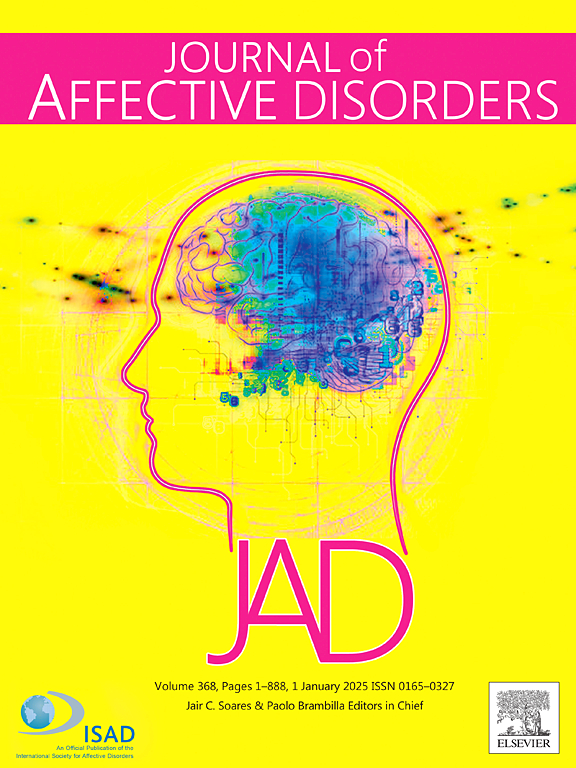Clinical correlates, lipid metabolic parameters and thyroid hormones are associated with abnormal glucose metabolism in first-episode and drug-naïve major depressive disorder patients with suicide attempts: A large cross-sectional study
IF 4.9
2区 医学
Q1 CLINICAL NEUROLOGY
引用次数: 0
Abstract
Background
The factors associated with glucose disturbances in major depressive disorder (MDD) patients with comorbid suicide attempts remains unclear. To the best of our knowledge, this is the first study with a large sample size to examine risk factors for glucose disturbances, including clinically relevant factors, lipid metabolic parameters, and thyroid hormone levels in first-episode drug-naïve (FEDN) MDD patients with comorbid suicide attempts.
Methods
A total of 1718 FEDN MDD patients were enrolled. The Hamilton Depression Scale (HAMD), Hamilton Anxiety Scale (HAMA), and Positive and Negative Syndrome Scale (PANSS) were used to assess the clinical symptoms of the patients. Fasting blood samples were collected and biochemical parameters were measured, including fasting blood glucose (FBG), total cholesterol (TC), triglyceride (TG), high-density lipoprotein cholesterol (HDL-C), low-density lipoprotein cholesterol (LDL-C), thyroid stimulating hormone (TSH), free thyroxine (FT4, FT3), anti-thyroid autoantibodies (TgAb), and thyroid peroxidase antibody (TPOAb). Statistical analyses were performed using multivariate logistic regression analyses and receptor operating characteristic curves.
Results
The prevalence of glucose disturbances was 24 % in MDD patients with comorbid suicide attempts, which was 1.88 times higher than that in MDD patients without suicide attempts (11 %). Among MDD patients with comorbid suicide attempters, compared with patients without glucose disturbances, patients with glucose disturbances had higher mean scores on the HAMA, HAMD and PANSS positive subscale scores, and higher mean levels of TC, TG, TSH, HDL-C, LDL-C, and TPOAb. The combination of HAMA score, HAMD score, PANSS positive subscale score and TSH distinguished between patients with and without glucose disturbances.
Conclusions
Our findings suggest a high prevalence of glucose disturbances in FEDN MDD patients with comorbid suicide attempts. Several clinical correlates, lipid metabolism parameters, and thyroid hormone function are associated with glucose disturbances in MDD patients with comorbid suicide attempts.
求助全文
约1分钟内获得全文
求助全文
来源期刊

Journal of affective disorders
医学-精神病学
CiteScore
10.90
自引率
6.10%
发文量
1319
审稿时长
9.3 weeks
期刊介绍:
The Journal of Affective Disorders publishes papers concerned with affective disorders in the widest sense: depression, mania, mood spectrum, emotions and personality, anxiety and stress. It is interdisciplinary and aims to bring together different approaches for a diverse readership. Top quality papers will be accepted dealing with any aspect of affective disorders, including neuroimaging, cognitive neurosciences, genetics, molecular biology, experimental and clinical neurosciences, pharmacology, neuroimmunoendocrinology, intervention and treatment trials.
 求助内容:
求助内容: 应助结果提醒方式:
应助结果提醒方式:


